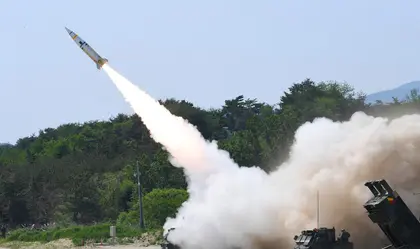Russian authorities decided to expand the country’s territorial waters in the Baltic Sea near the state border with Lithuania and Finland, according to a report by the Moscow Times, which cites a draft resolution from the Russian government.
Kyiv Post wasn’t able to access the link cited by the Moscow Times media outlet.
JOIN US ON TELEGRAM
Follow our coverage of the war on the @Kyivpost_official.
The document, prepared by the Russian Ministry of Defense, states that Russia intends to declare parts of the waters in the eastern Gulf of Finland and near the cities of Baltiysk and Zelenogradsk in the Kaliningrad region as its internal sea waters.
According to the draft, to achieve this, the authorities will alter the geographic coordinates that determine the baselines from which the width of Russia's territorial sea and the adjacent zone off the coast and islands are measured.
The current geographic coordinates were established by the Council of Ministers of the USSR in 1985.
According to the authors of the project, they “do not fully correspond to the modern geographical situation.”
The points were recorded “using small-scale marine navigation charts,” based on mid-20th-century data, which “does not allow us to determine the external border of the internal sea waters” of Russia, the document states.
The 40-year-old resolution of the USSR Council of Ministers regulating the borders in the Baltic Sea is proposed by the Russian Ministry of Defense to be partially “recognized as inoperative” (section “Baltic Sea”).

Russia Gave N. Korea Oil, Anti-Air Missiles in Exchange for Troops: Officials
Border revision proposal coincides with tactical nuclear drills
As reported by the Moscow Times, the border revision document was presented for public discussion almost simultaneously with the start of exercises on the use of tactical nuclear weapons.
Russia on Tuesday announced the start of tactical nuclear weapons drills close to Ukraine, in what it said was a “response” to Western “threats.”
Russia's Defense Ministry stated the drills were taking place in its Southern Military District, which borders and includes parts of Ukraine that Moscow claims to have annexed. It did not specify the exact locations.
The drills are designed to test “the readiness of personnel and equipment of non-strategic nuclear weapons combat units to respond and to unconditionally ensure the territorial integrity and sovereignty of the Russian state,” the Russian Defense Minister said in a statement.
How did Finland and Lithuania react?
“Another Russian hybrid operation is underway, this time attempting to spread fear, uncertainty, and doubt about their intentions in the Baltic Sea,” Lithuanian Foreign Minister Gabrielius Landsbergis posted on X.
According to him, this is an obvious escalation against NATO and the EU and “must be met with an appropriately firm response.”
Finnish Foreign Minister Elina Valtonen reacted on X, stating that the U.N. Convention on the Law of the Sea contains provisions on defining maritime zones of coastal states and that “we assume that Russia, as a party to the Convention, will act accordingly.”
“It should be remembered that confusing is also a hybrid influence. Finland will not be confused,” she wrote.
The denial
Russia has no intention of revising its maritime border in the Baltic Sea, including its exclusive economic zone and continental shelf, according to a “military-diplomatic” source cited by Interfax on Wednesday.
This denial, also reported by state news agencies TASS and RIA, comes amid European leaders’ concerns following the publication of a draft bill that seemed to propose changes to Russia's Baltic border.
Putin’s intentions for the Baltic Sea
Supreme Commander of the Swedish Armed Forces, Micael Byden, warned that Russian President Vladimir Putin aims to gain control of the Baltic Sea, which is often referred to as a “NATO lake.” His comments followed the online publication of a Russian Defense Ministry document revealing Moscow’s intentions in the Baltic region.
Byden expressed confidence to the German network RND that Putin is focused on Gotland, a strategically significant Swedish island. “Putin’s goal is to gain control of the Baltic Sea,” Byden stated. “Who controls Gotland controls the Baltic Sea.”
Gotland, located about 200 miles north of Kaliningrad, is Sweden’s largest island. Its capture by Moscow could pose a threat to NATO countries from the sea, potentially disrupting peace and stability in the Nordic and Baltic regions. Byden added, “The Baltic Sea should not turn into Putin’s playground.”
You can also highlight the text and press Ctrl + Enter






